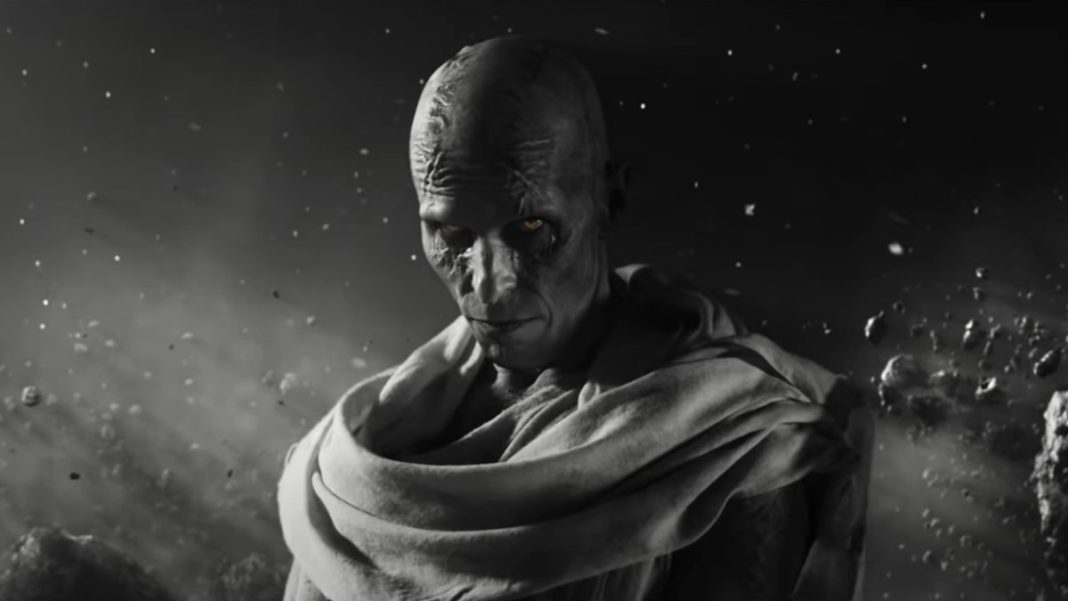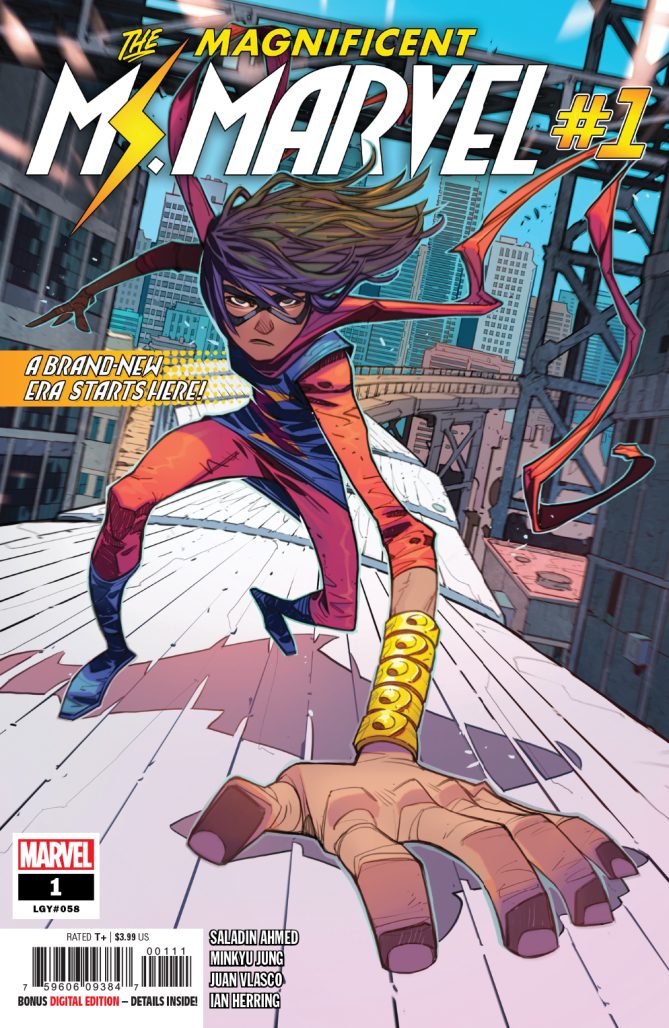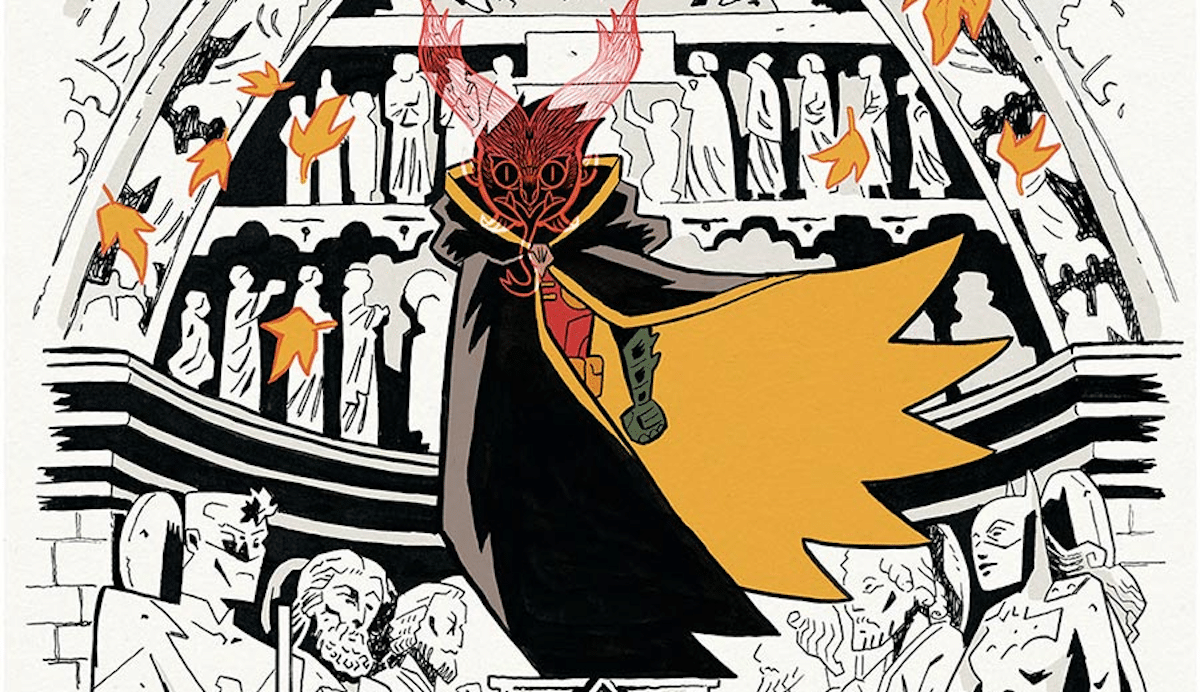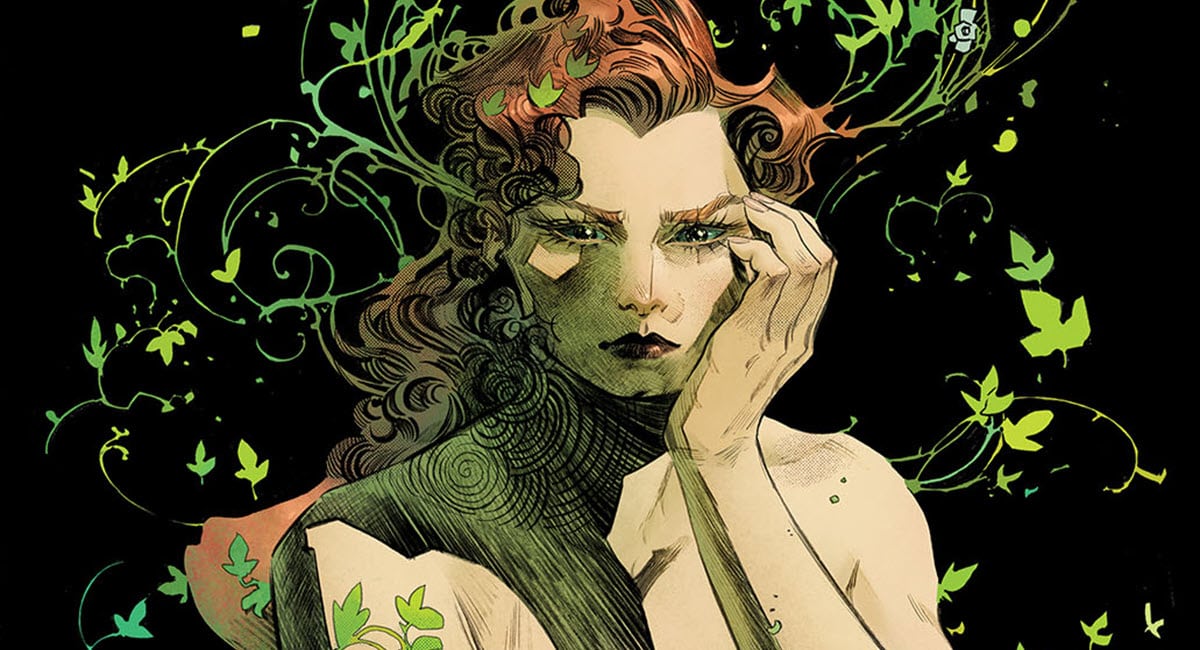The Beat’s Gregory Paul Silber has been accused of having a bit of an… obsessive personality. Each week in Silber Linings, he takes a humorous look at the weirdest, funniest, and most obscure bits of comics and pop culture that he can’t get out of his head.
When it comes to comic book adaptations, a phrase you see thrown around a lot if you follow geek fandom is “comics accuracy.” Usually it’s used to refer to the adapted version of a character’s visual fidelity to their comic book source material, such as a recognizable costume. It makes sense that fans would gravitate towards these aesthetic comparisons. After all, comics are a visual medium, and visual iconography is a key component of the language of sequential art.
But as more and more comics get adapted to mainstream movies, TV shows, et cetera, and the appearance of obscure characters in adaptations becomes less and less of a novelty (how many of your coworkers or classmates would’ve heard of Moon Knight a year ago?), the more and more I find fan culture’s obsession with how closely live-action characters resemble their comic book counterparts to be silly and superficial.
The new trailer for Thor: Love and Thunder got me thinking about this. Specifically, I’m talking about Christian Bale as Gorr the God Butcher, created by writer Jason Aaron and artist Esad Ribic. First of all, I’m inclined to like Gorr for nostalgic reasons. I loved that initial Thor: God of Thunder arc from 2012 in which Gorr debuted as it was being released in floppies, when I was still quite new to monthly comics. I thought Ribic’s design for the new villain was metal as hell and even a little creepy, with a fittingly over-the-top story by Aaron to go with it. I even remember thinking “damn, they should put this guy in a movie someday.”
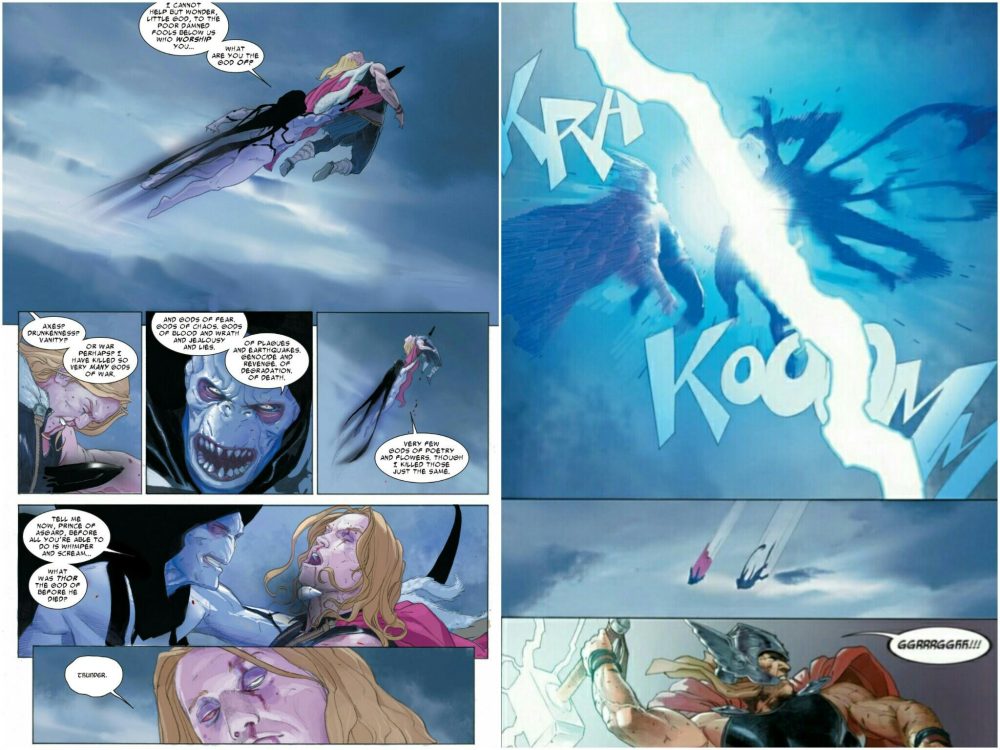
I’m pretty jaded by the Marvel Cinematic Universe, but even I thought those glimpses of the live-action Gorr in the trailer for Thor 4 (Thour) looked sick. Sure, he doesn’t look quite the same as he does in the comics, but who cares? He seems to capture the spirit of the character, and by covering Bale with just enough spooky makeup so that the actor is still recognizable, it should allow him to give a more dynamic, nuanced performance. We wouldn’t want another Oscar-Isaac-as-Apocalypse situation now, would we?
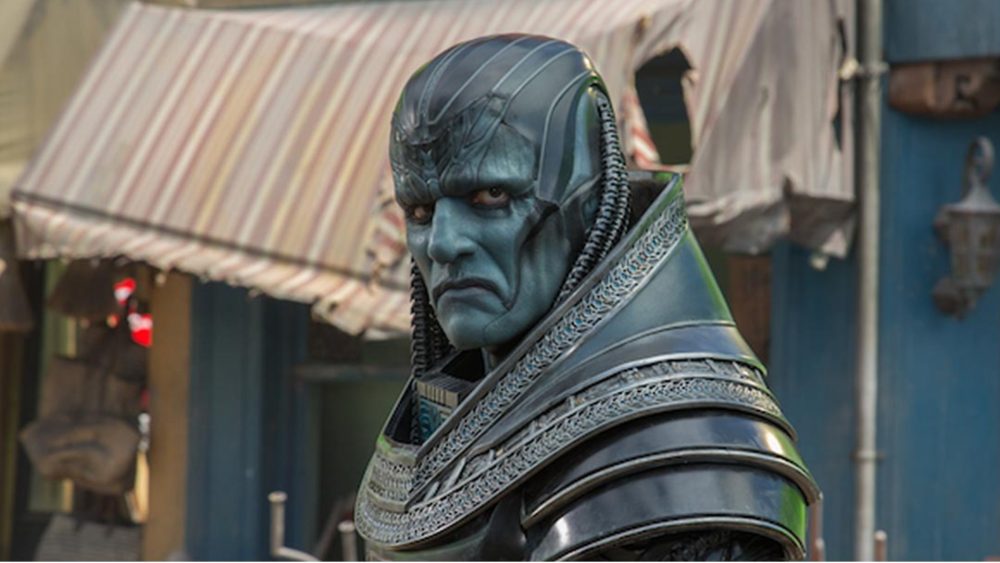
But apparently, several outspoken folks on social media disagreed. I guess I should’ve expected that knee-jerk reaction to a few small aesthetic changes to a barely 10-year-old comic book character. There’s not much substance to these complaints beyond “he looks different, which is bad.”
Many defenses of live-action Gorr point out, quite correctly, that if director Taika Waititi and company adhered more strictly to the supervillain’s comic book design, his pale skin and lack of nose would’ve looked too similar to Ralph Fiennes as Lord Voldemort in the Harry Potter film adaptations. Others praised how refreshing it is to see an MCU project make the rare decision to go the practical effects route over CGI. You won’t find any disagreement from me on that front either.
But mostly, I think we’re focusing on the wrong things. Granted, the new Thor movie doesn’t come out until July 8th, 2022, about six weeks after this piece gets published. For all I know it’ll have a shocking twist in which Gorr realizes he was wrong for butchering all those gods and, I dunno, finds Jesus. But Thor: Ragnarok was easily one of the best MCU movies largely because Waititi demonstrated an exuberant love of the source material that other filmmakers within the franchise don’t seem to necessarily share, so I doubt he’ll let us down with Love and Thunder.
My point is, fandom often misses the forest for the trees in the way adaptations are discussed. A character’s onscreen look is far less important than how well they share the personality and spirit of the source material, and far too often, fans let their obsession with the former ruin their ability to enjoy the latter.
Take Sam Raimi‘s original 2002 Spider-Man movie, for example. To this day, there are still Spidey fans who harp on the fact that Tobey Maguire‘s version of the character had “organic web-shooters” that came about naturally after he was bitten by the radioactive spider which gave him his powers, as opposed to mechanical webshooters that he created himself, which is where Spidey gets his webs in the comics.
I get why that would be a sticking point (no pun intended) for some people. Peter’s intelligence and resourcefulness are essential to his characterization, and building his own web-shooters has been a great demonstration of that ever since they debuted in his first appearance from Stan Lee and Steve Ditko way back in 1962.
But two live action reboots later, not to mention several years of actually reading Spider-Man comics, I’m still blown away by how well the original film captures the spirit of the books. He doesn’t build his own web-shooters like Andrew Garfield in The Amazing Spider-Man, and due to complicated rights issues he couldn’t meet other Marvel superheroes like Iron Man (Robert Downey Jr.) and Doctor Strange (Benedict Cumberbatch) as Tom Holland does in the MCU Spider-Man movies. But Raimi consistently displays that classic Spider-Man je ne sais quoi better than reboot directors Marc Webb and Jon Watts.* Maguire’s is the painfully shy, guilt-ridden, perpetually broke, and yes, brilliant “hard luck hero” Spider-Man was always meant to be, even if he lacks a few inessential trappings.
*The animated Spider-Man: Into the Spider-Verse is obviously an exception. It’s hands-down the greatest superhero movie of all time, and my favorite MOVIE, period. I may have said this before, but anytime I make broad complaints about the state of superhero adaptations, assume I’m making an exception for Into the Spider-Verse.
The same way an adaptation can capture the spirit of its source material while neglecting certain superficial details, we’ve also seen the inverse: adaptations that get the aesthetics right but miss the point thematically, emotionally, et cetera. Zack Snyder‘s 2009 Watchmen film is a useful example. Even setting aside my moral opposition to the project regarding Warner Bros.’ mistreatment of Alan Moore (the man himself, not merely the adaptations of his work), it’s fascinating how a film that painstakingly recreates Dave Gibbons panels can miss the point so thoroughly.
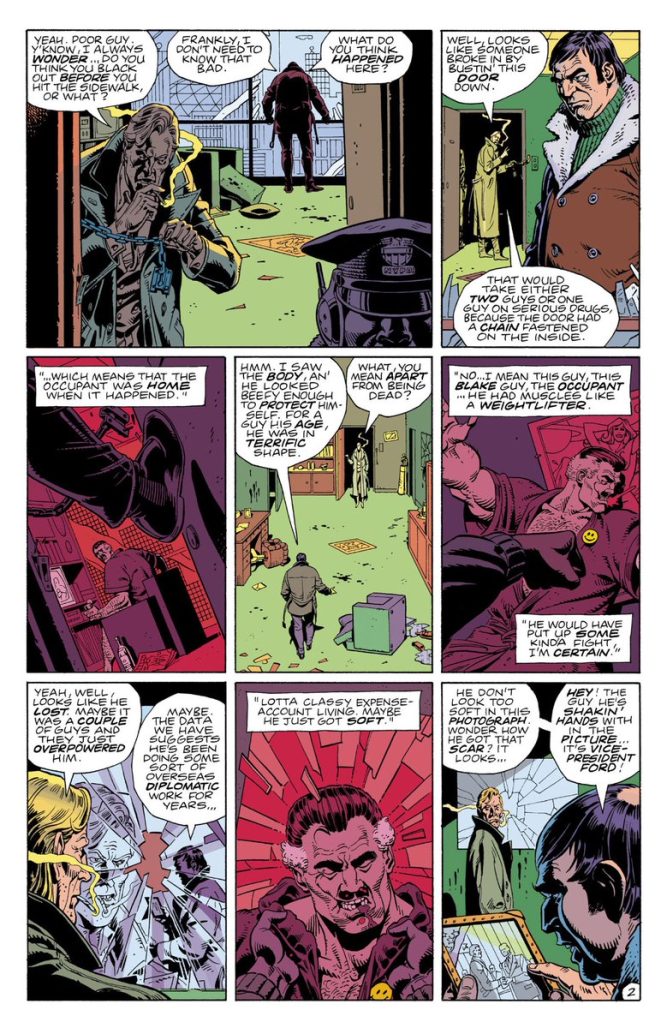
Case in point: that opening fight scene in which The Comedian gets murdered. Watchmen the comic doesn’t have much in the way of what can be described as “fight scenes” like a typical superhero comic, because Moore and Gibbons strived for a radically more sophisticated, understated take on superhero tropes. There’s violence, to be sure, but it appears more in the form of shocking flashes of brutality, not stylized, extended sequences that carry on for multiple pages. Most of what we see of The Comedian’s murder is focused on the aftermath, as the crime is investigated by detectives and, later, the antihero Rorschach. We don’t need to see how badass The Comedian was as he fought back his assailant. We only need to know that the murder took place. And yet, the film portrays it in typical Zack Snyder fashion as a martial arts showdown with plenty of slow-motion.
This is a consistent frustration I have with Snyder’s superhero films. He clearly has a grasp of the aesthetic appeal of comic books as a medium. His signature technique of speeding up and slowing down the action at key moments must be inspired by the way comic book pacing allows readers to manipulate the rhythm of a story within the theater of their own minds. Some scenes are reminiscent of a 16-panel grid a la Frank Miller‘s The Dark Knight Returns, while some shots bring to mind glorious splash pages.
Yet his DC films all too frequently misinterpret what makes characters like Batman and Superman so appealing. I’ll give Snyder that the flight sequences in Man of Steel are pretty cool, capturing the rush of that fantasy in a way previous Superman films couldn’t quite manage (largely due to technical limitations). But I’ll never be able to get behind a Superman (Henry Cavill) who fatally snaps an enemy’s neck when my favorite thing about the character is his unwavering, radical commitment to kindness. Similarly, Snyder’s take on Batman (Ben Affleck) has some cool ideas, such as being the first live-action Batman with stark white slits for eyes like in the comics, but Batman with guns is an idea so bad I wrote a whole other article about it.
This is not just a Snyder problem. The much-derided 2009 Green Lantern film looks quite a bit like a Green Lantern comic upon first glance, but the plot and character development is so generic that if you never read the comics, you’d be forgiven for doubting that they can actually be quite imaginative. I have to admit, though, I’m not sure I ever finished that movie. It was too boring. But hey, even Ryan Reynolds hadn’t seen it until last year.
I’m not immune to getting hung up on certain superficial details myself, though. As I mentioned in last week’s column, I’m not crazy about the fact that they’re changing Kamala Khan’s powers for the upcoming Ms. Marvel show. Instead of “embiggening” like in the comics, she’ll be able to construct purple light constructs that bring to mind a certain green space cop. It’s not that I don’t think Kamala can’t still have Kamala’s personality without the ability to enlarge her limbs, just that it’s such a fun power that I fear you’re losing something by taking that away from her in adaptations.
I’ve seen some folks defend the change by pointing out that as charming as “embiggening” can be in comics, that kind of power might come too close to body horror for comfort in live action adaptations. Personally, I wouldn’t have a problem with a little body horror in a coming-of-age superhero story, the same way I disagree with those who say Peter’s organic web shooters in the Raimi Spider-Man films are gross. Teenagers getting superpowers is a good puberty metaphor. When you’re at that age, puberty often feels like body horror. But I’m sympathetic to those who’d rather not think about stuff like that.
In any event, as with Thor: Love and Thunder, I’ll have to wait and see how the Ms. Marvel show plays out. Despite my misgivings about the power set change, I’d like to think that as long as the writers, directors, and titular star Iman Vellani capture the spirit of the character I fell in love with from the comics, I’ll be glad she’s getting introduced to a wider audience.
Just don’t give her a gun, please.


